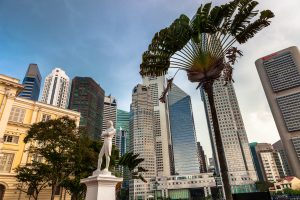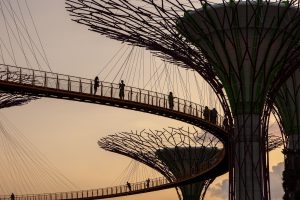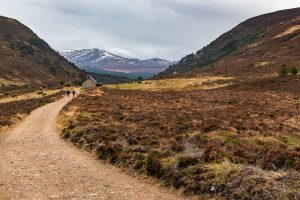Jan 19th 2013
“It very rarely rains all day in Singapore”. So say the guidebooks. Well in that case, I can claim to be honoured, nay privileged to have shared the experience of one of those very rare occasions. It was raining when we woke up, it rained through the morning, through the afternoon and into the early evening. And of course, mere drizzle this was not. The rain in Spain may fall mainly on the plain, but the rain in the tropics falls in sheets, everywhere. Of course, the good thing about tropical rain, is that it is, well, tropically warm, so, armed with a pair of decent umbrellas courtesy of the hotel, we set off to explore the city, safe in the knowledge that whilst we were bound to get wet, we would not get cold. We had two objectives for the day: two districts of the city as contrasting to each other as they were representative of two of the cultures that helped build Singapore into the vibrant, multicultural city it now is. These areas were Little India and the Colonial District. I had never been to the former, but had fond memories of strolling around the latter on my last visit back in 2001. On that visit I had supped a Singapore Sling in the Palm Bar at Raffles in the warm afternoon sun and had almost melted in the searing heat walking around the Pandang and visiting the sights thereabouts. Melting was not going to be a problem on this visit. That is, of course, unless the downpour was of acid rain.
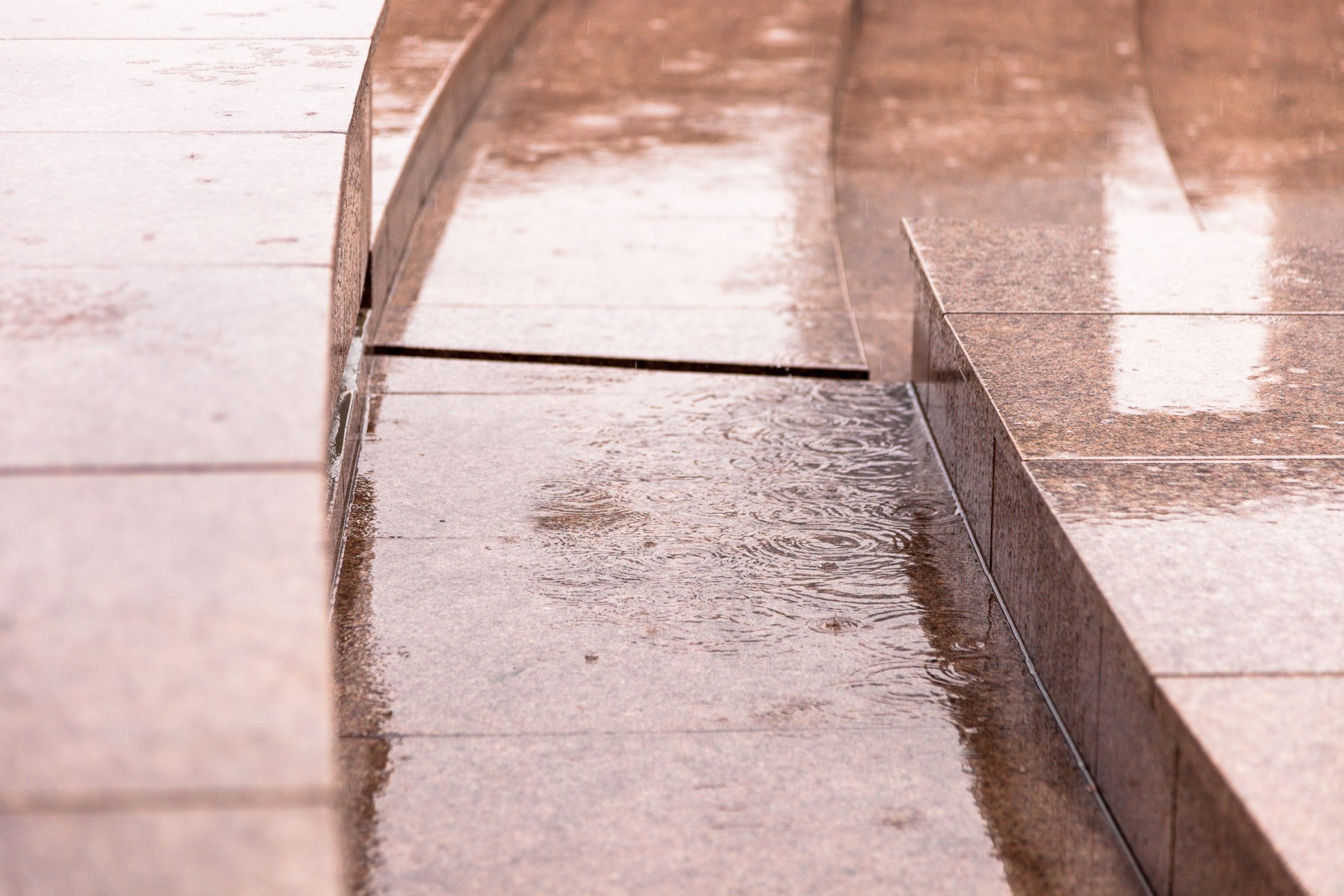
At first the city felt depressingly drab in the rain, as we walked along the southern bank of the Singapore River. The grey, sagging sky simply cast its deathly pall over the cityscape, roads and buildings left as skeletal remains, dripping and dull. The river was even more lifeless, a drear, muddy puddle through which cut the occasional water taxi. The towers of the business district brooded, hunkering together against the downpour. It was easy to wonder why we were pounding the streets that morning, wonder why we were not tucked up at home with a good book and a nice cup of tea. But it is days like this that test the mettle of hardy travellers, and those who take up the challenge are usually rewarded. The first reward on this day was the gentle climb up Fort Canning Hill, through lush tropical rainforest vegetation, shiny and dripping with moisture. The rain made this place feel alive. The lack of sun made the climb bearable, if still sweaty in the high humidity, and the lack of other visitors made it feel like we had the place to ourselves. We had started the climb from near the Armenian Church, one of the oldest extant buildings in the city and one of its first churches. First built in 1835, but changed and remodelled several times, the church that stands there today is an excellent example of British-style Neo-Classical architecture, but adapted out of necessity to suit the tropical climate. In the pouring rain, the wide verandas behind the Doric-style columns provided shelter and the gardens surrounding the buildings added an atmosphere of calm. Despite the extravagant architecture, the whitewashed stone added an air of simplicity, magnified by the starkness of the interior, making this truly a place of calm reflection away from the bustling streets of the city just outside.

From there, we followed a trail through a spice garden which provided the chance to see, au naturel, those exotic cooking ingredients you normally only see dried, in a jar, with Schwartz written on the side. So that’s what tamarind looks like, well I never. This had been the site of Singapore’s first botanic gardens, created by Raffles himself, demonstrating his fascination with the part of the world he had made his home. Although much changed from his time, I think Sir Stamford would have approved of the spice trail with its methodical plant labelling and information boards. At the top of the track, past the fence around the reservoir with its sign showing a stick figure pointing a gun at another stick figure with its hands held high, whose meaning was pretty obvious, came another reward as we stumbled across a tomb under a wooden shelter. Here, virtually unmarked other than by a sign asking visitors not to litter, sheltering in the calm of a pocket of rainforest was a keramat, a traditional burial ground for a revered leader dating back to the 1400s. It is unknown for certain who was buried in this spot, but there are many who believe it to be the tomb of Iskandar Syah, one of the last kings of Temasek, the historic realm that was destined to become Singapore. But a bigger highlight even that this came just outside the Fort Canning Building: an orchid, growing wild on a tree in full purply, flowery glory. This was the nearest I’d ever come to seeing one of these fantastic flowers at bloom in the wild, even if the “wild” was the forecourt of a colonial era building. Even though the day was as horrid as they can be in tropical Asia, people couldn’t help but stand there, oblivious to the pouring rain, and stare, wide-eyed and wondrous at this fabulous show of floral glory.
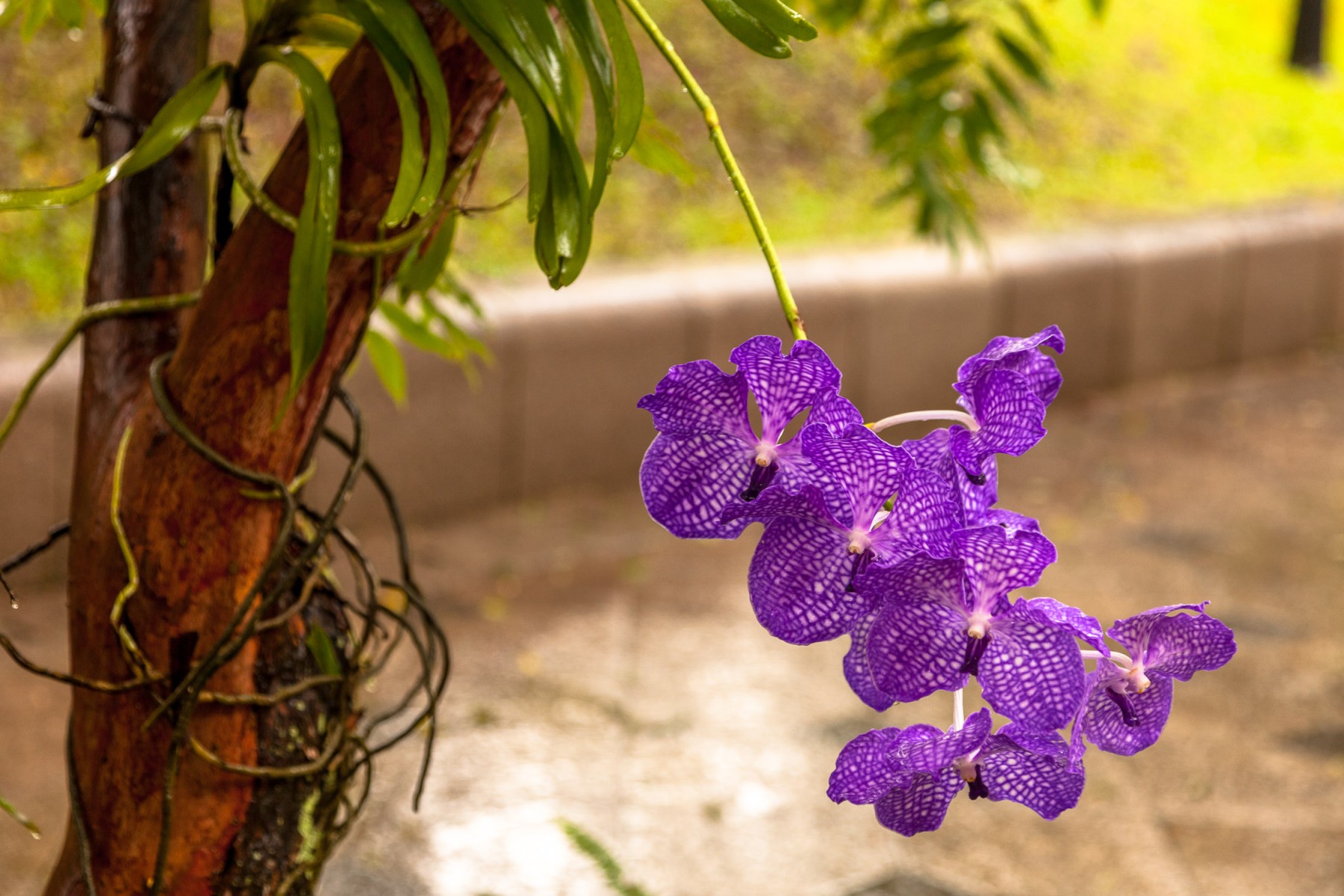
We descended from Fort Canning Hill and headed further east, crossing Penang and Orchard Roads, passing the glitzy shopping centres near Dhoby Gaut MRT station, and heading onto streets one more full of shophouses, this time of much less interest than those in Chinatown. These were simply functional, concrete, modern variations on the historic theme, and stood interspersed with taller, though not tall, functional looking hotels, office buildings and the ubiquitous shopping malls. Under the grey skies, this area certainly looked drab, and with this nondescript architecture, the wet roads and well-behaved traffic, this could so easily have been a Western European or North American city on a wet winter day. The only obvious signs that this was Asia were in the features of the vast majority of the people and in the dominance of Chinese writing on the shop fronts.
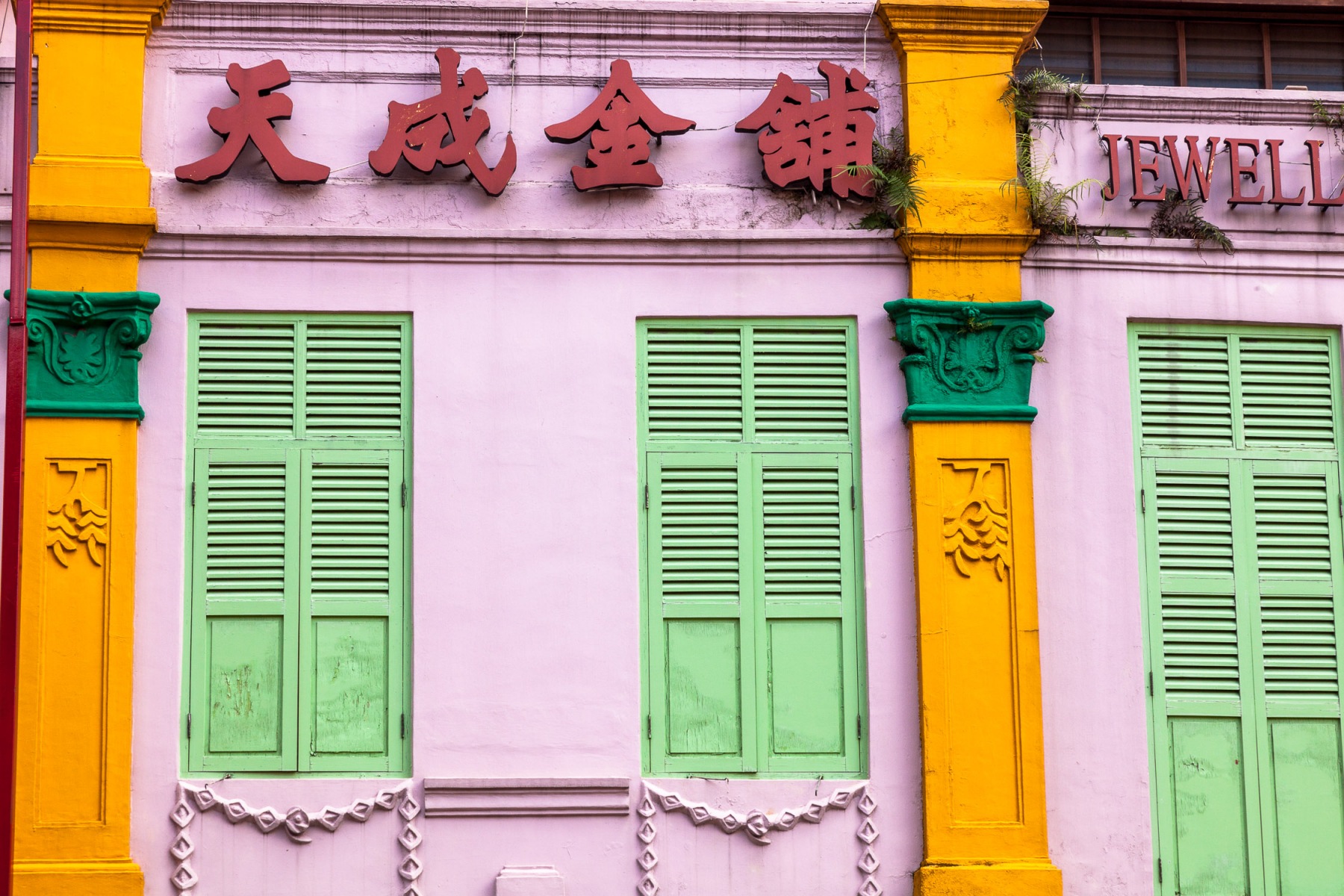
A few streets on though, any doubts that we had mysteriously been transported from one continent to another were dispelled. Suddenly, as we walked along a single street, Chinese gave way to Indian, shops selling food ingredients and wholesale goods to gold dealers and clothing stalls. North East Asian Singaporean faces in western clothes dwindled in number to be replaced by South Asian Singaporean faces dressed in the bright colours of traditional Indian dress. There hard been no demarcation line, not even a crossed street, but we had been transported to a different place nonetheless. In a stride we had moved from South China to Southern India. The rain still poured down, but the reflections now were of bright colours. The noise of the streets was still there, but now carried the note of music from the Subcontinent. The sweet smell of incense still hung about, but was joined now by the pungency of South Indian spices. Never had I experienced such a cultural change in such a short space of time, and the discomfort of wet sandalled feet was soon forgotten as we soaked up the new surroundings, squeezing through the stalls crowding the “five foot ways” under cover of the shophouses, stopping to look at the racks of cheap clothing and peering in through the windows of shops dripping with gold jewellery. Turn down a side street and you could easily imagine that you were in a corner of Chennai before heading back onto the Main Street and back into Singapore. There are no real “sights” in Little India, other than a couple of crowded, slightly dishevelled looking Hindu temples and a small smattering of Mosques, but for me its people, its sounds, its smells and its colour are reason enough to pay a visit – even in the pouring rain.
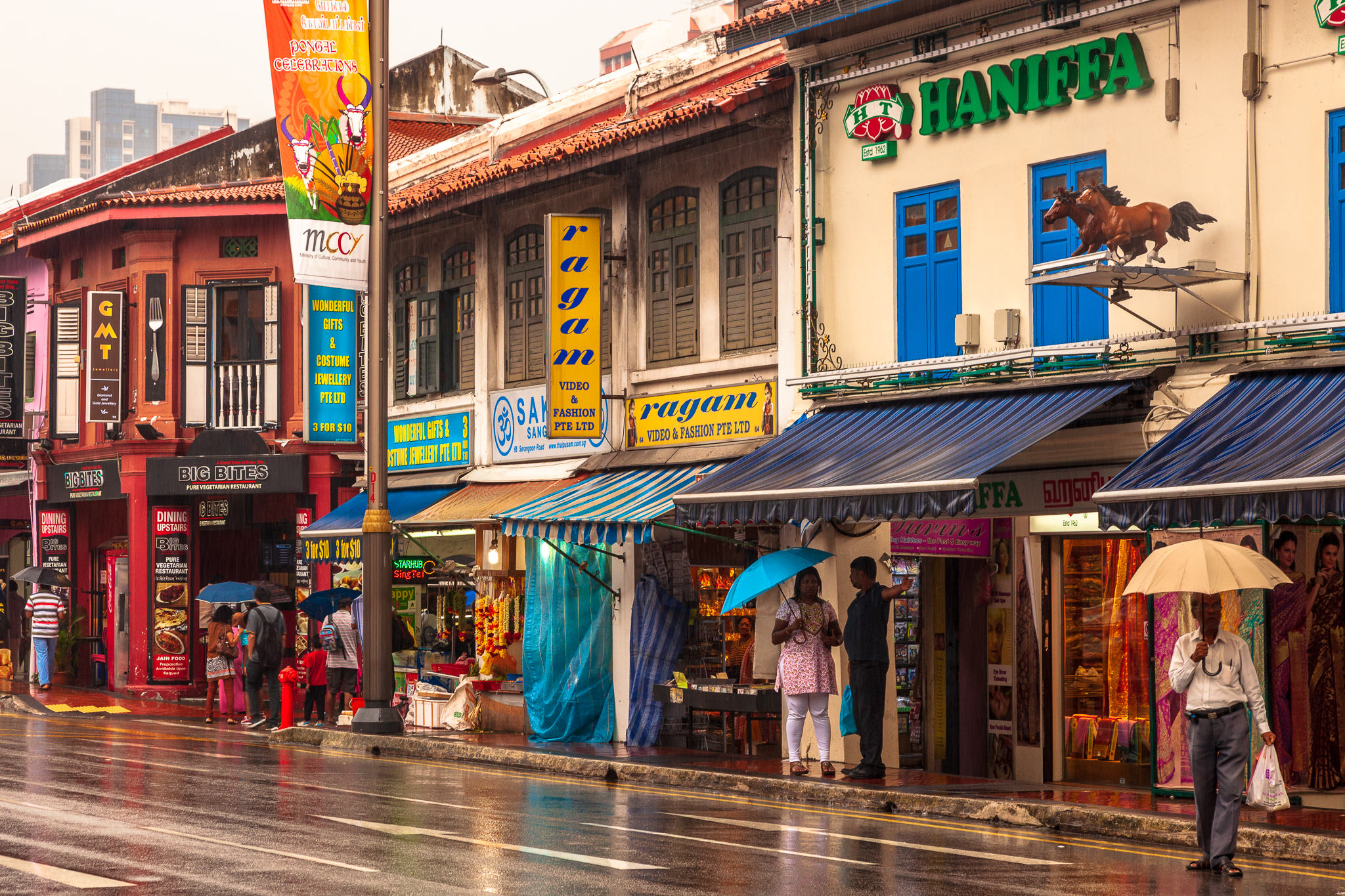
From the far end of Little India, it was a long walk back through the rain sodden streets to the Colonial District. With wet, cold feet and damp clothing it could have been a slog, but the city continued to conspire to delight with little details of architecture or cultural colour. At the lower end of Petain Road before it met Jalan Besar, we stumbled across the most captivating building I had seen in Singapore. It felt such a mixture of styles, it would be hard to categorise its architecture – colonial? undoubtedly; South Asian? perhaps; maybe with a hint of the Moorish and a dash of Byzantine. Whatever its classification, this mongrel building was stunning, a massive cut above the standard shophouse all around. It was also unclear as to what it’s original purpose was. It was now a collection of flats, newly refurbished and glistening in the rain, but what was its history? A hotel? An apartment building? A wealthy merchant’s house? Whatever its story, this was a building to intrigue, to delight, and most certainly to help you forget the blisters forming on soaked toes and the aching legs from so many miles of walking.
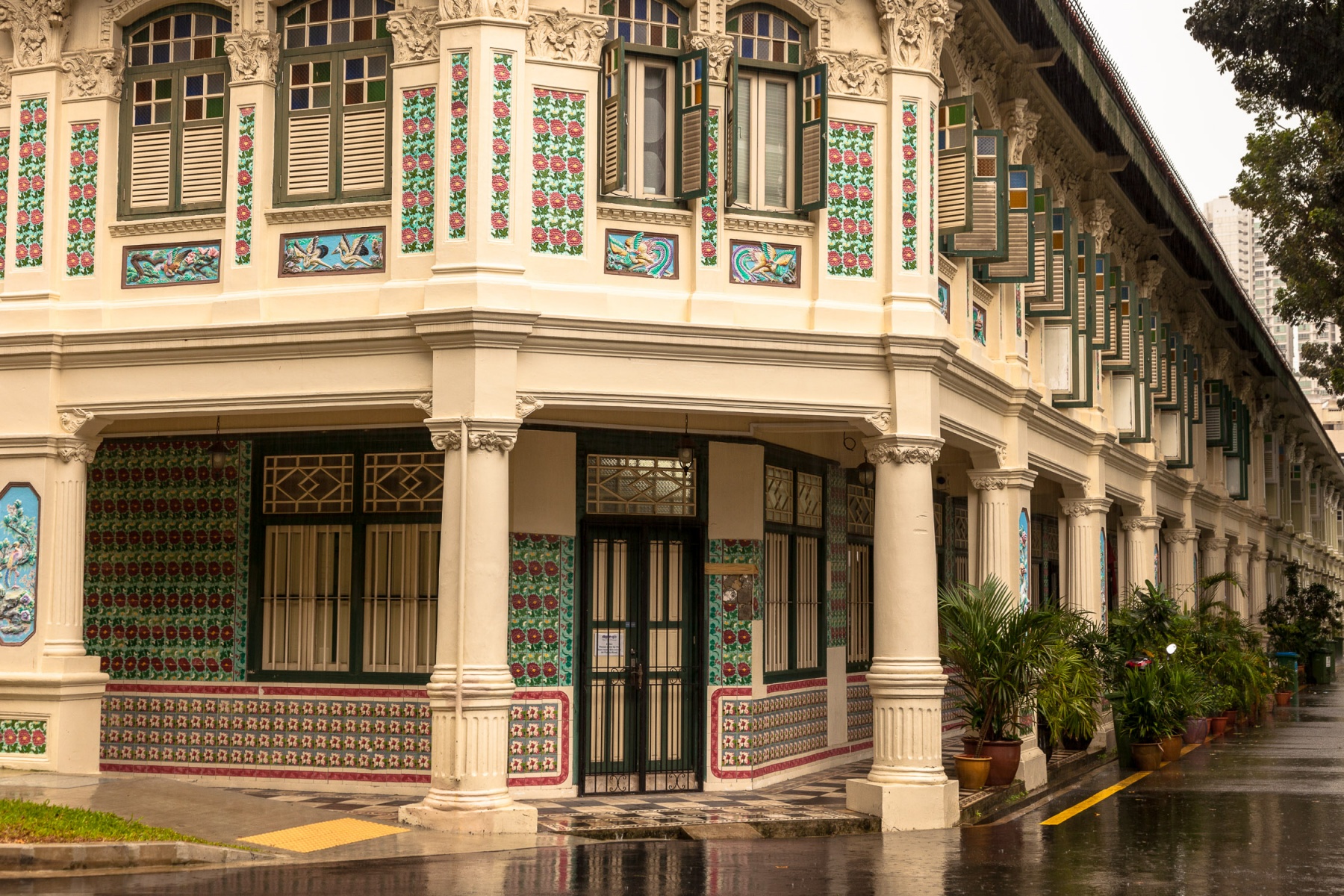
Thus mentally occupied, we soon found ourselves back in the Colonial District, stumbling upon the rear entrance to the Raffles Hotel, from where we strolled past the steamed up windows of a dining room where well-dressed guests consumed conversation and cream tea, along the colonnaded cloister that skirted the Palm Court with its dripping fronds and empty chairs, in through the lobby and out into the driveway where a harrassed doorman tried to lever luggage-laden guests into taxis ahead of the gawping tourists. There seemed very little reason to linger in this tourism-hallowed place. I remembered the hotel as bright and cheerful, a small oasis of calm and opulence away from the city buzz, but under the hanging sky and incessant rain, the place felt dark, dingey and claustrophobic. It felt slightly sad: a place whose only purposes were to pander to the obnoxiously stuck up demands of the rich or would-be-rich and to provide another stop off point on the heavily eroded tourist trail for the been there, seen it, took the photo and bought the tacky souvenir handmade soap brigade.
I think the rain must have started getting to me. Or maybe it was the aching, blistered feet. Whatever the reason, I could feel the cynicism induced by the gloominess of Raffles leaching into my head. I was no longer enjoying this exploration of the city. My mood was not helped by the memory of walking the colonial district in blazing sun under a stunning blue sky 12 years before. Then, the striking Civilian War Memorial had gleamed, a fitting tribute to those who had deserved least to suffer at the hands of the occupying Japanese in the Second World War. Today, the top of this inspiring tower was almost lost in the low-hanging cloud, its whiteness blending in with the whiteness of the sky above. From here, it was a relatively short walk through the expansive underground concourse of Esplanade MRT to the Theatres on the Bay Complex. A chance to step out of the rain was most welcome. The Esplanade – Theatres on the Bay complex is one of the world’s leading Arts Centres. Opened in 2002, the striking modern buildings, compared to durian fruit by the locals house world class theatres, a concert hall, gallery space and an arts-focused library. Of course, this being Singapore, the complex also includes a glitzy shopping centre as well as bars, restaurants and even a hawker-centre style food court. Outside a terrace steps down to the waterfront, with fine views over Marina Bay to the Marina Bay Sands resort and the city skyline beyond.
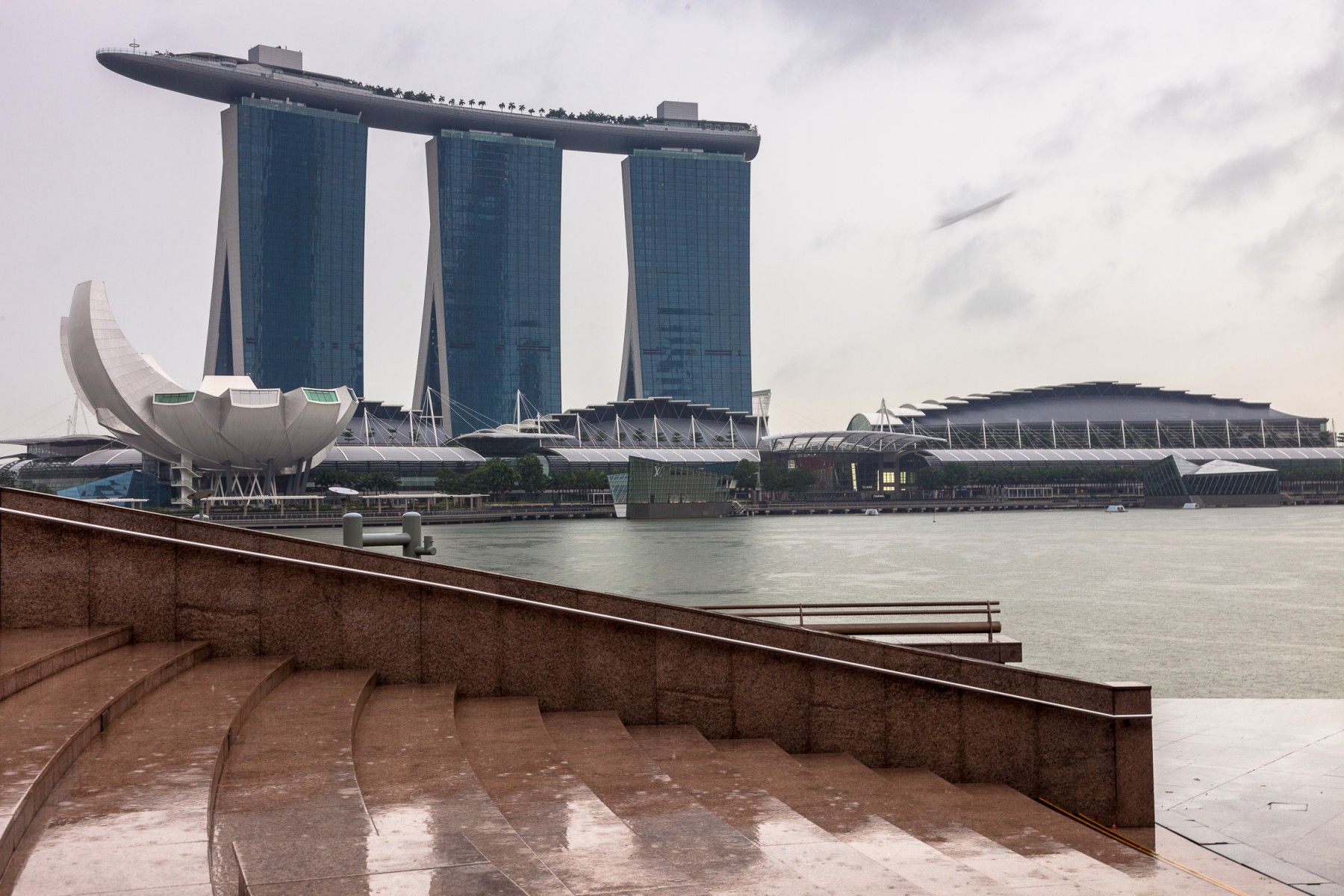
Even with the rain still dropping out of the sky, this was still a relaxing place to sit, under the shelter of a covered amphitheatre on the water’s edge and take in the diversity of the cityscape, its mixture of old and new, traditional and avant-garde and reflect on a few days of street pounding around this unique place. There can be few places in the world with such a split personality. Here is a city founded on the trade of empire, renewed by the pursuit of capitalism, reinvented for modern consumerism and perfectly crafted for the requirements of tourism. Singapore is an historical place, that almost destroyed its own heritage under the guise of modernisation, but now stands almost perfectly balanced between the recognition of the past and the desire to embrace the future. To the casual observer, it can seem too sanitary, too perfect, too ordered, almost soulless. Take time to walk the streets though, away from the glitzy malls and modern hotels and scratch beneath the surface, and the city’s soul will show itself – the natural product of a place built on a foundation of multiculturalism and immigration, in which people from diverse geographical and cultural backgrounds can retain their traditional identities, yet be part of an entity as holistic as they come.
Images from the Tony Bridge Photography Singapore gallery:

